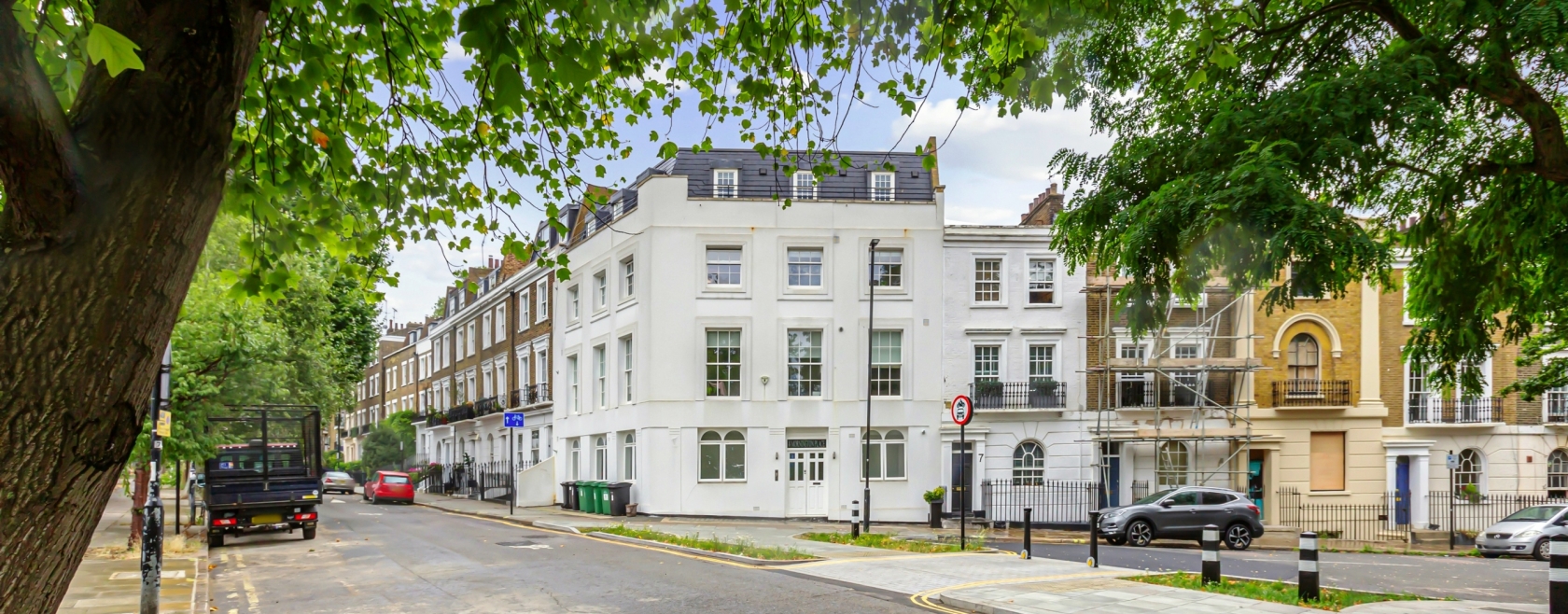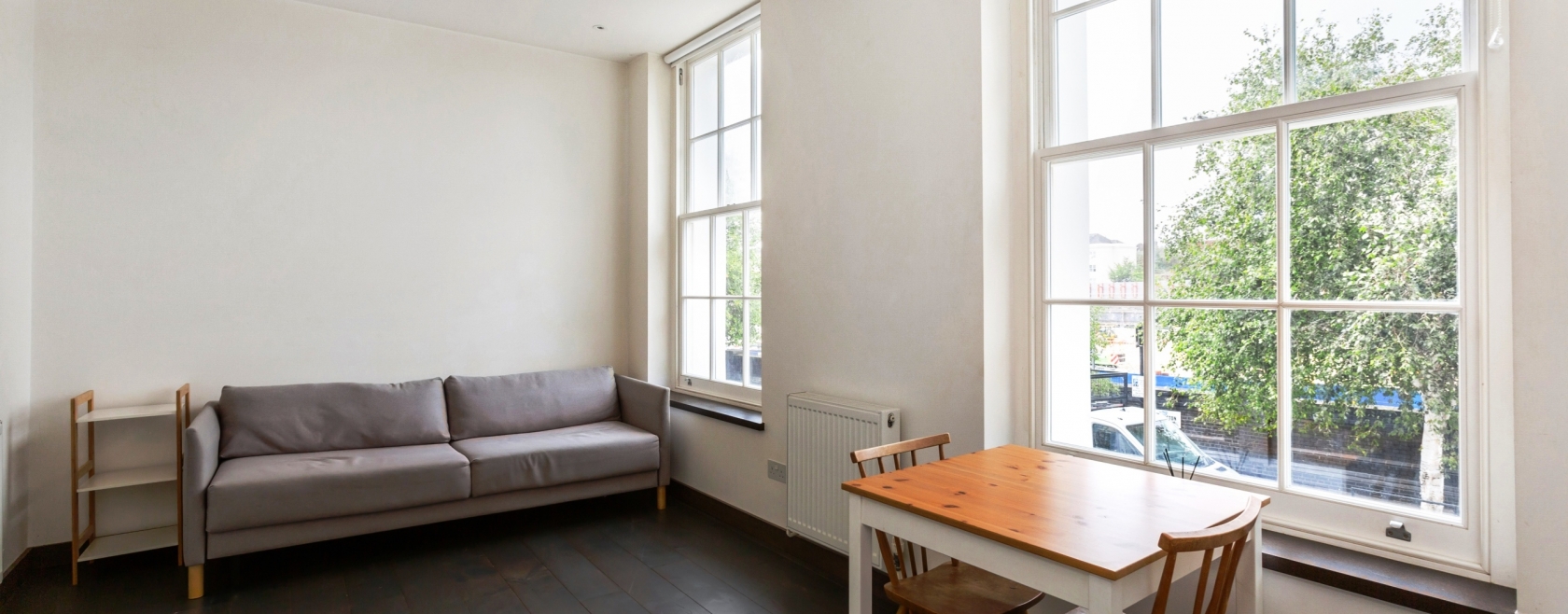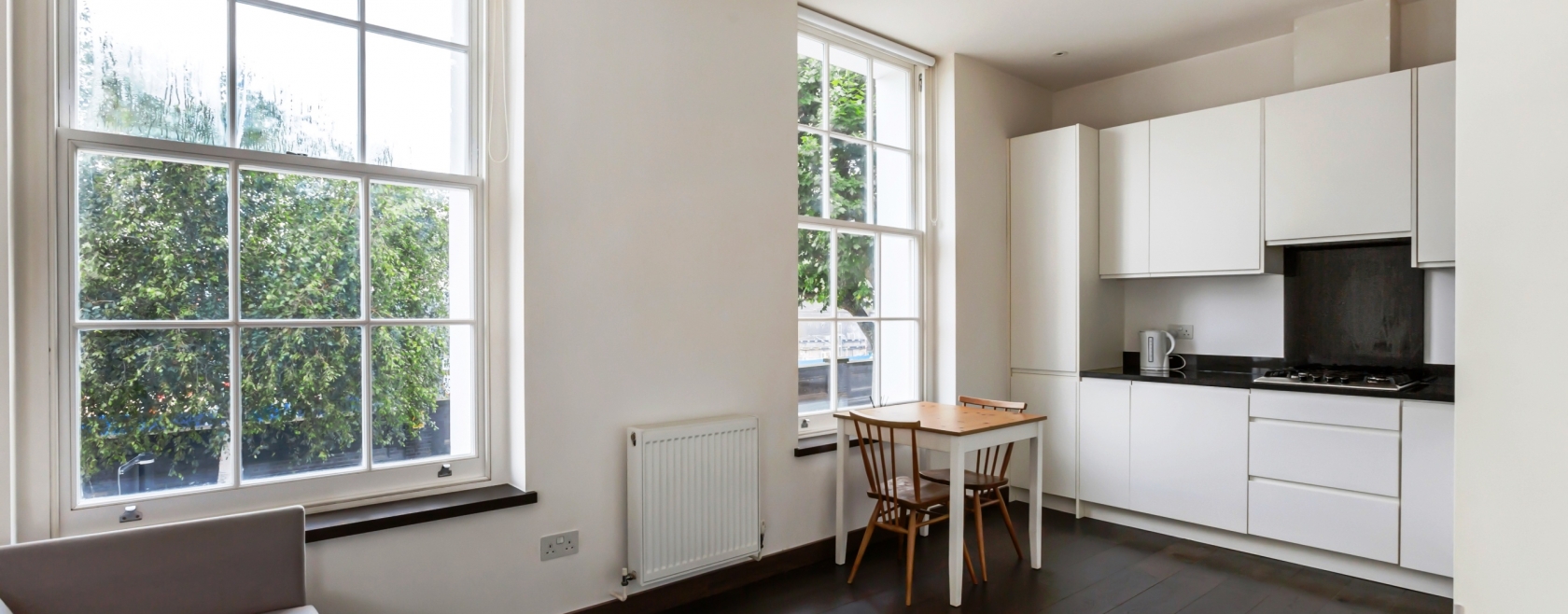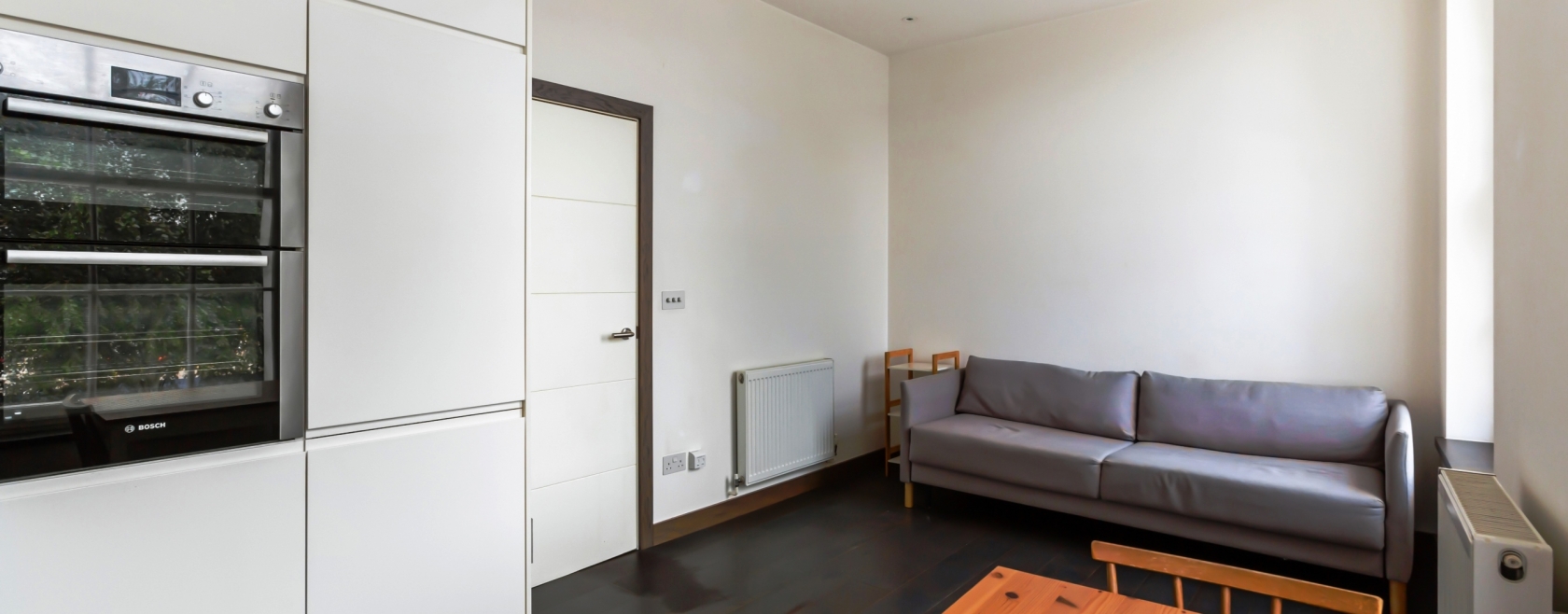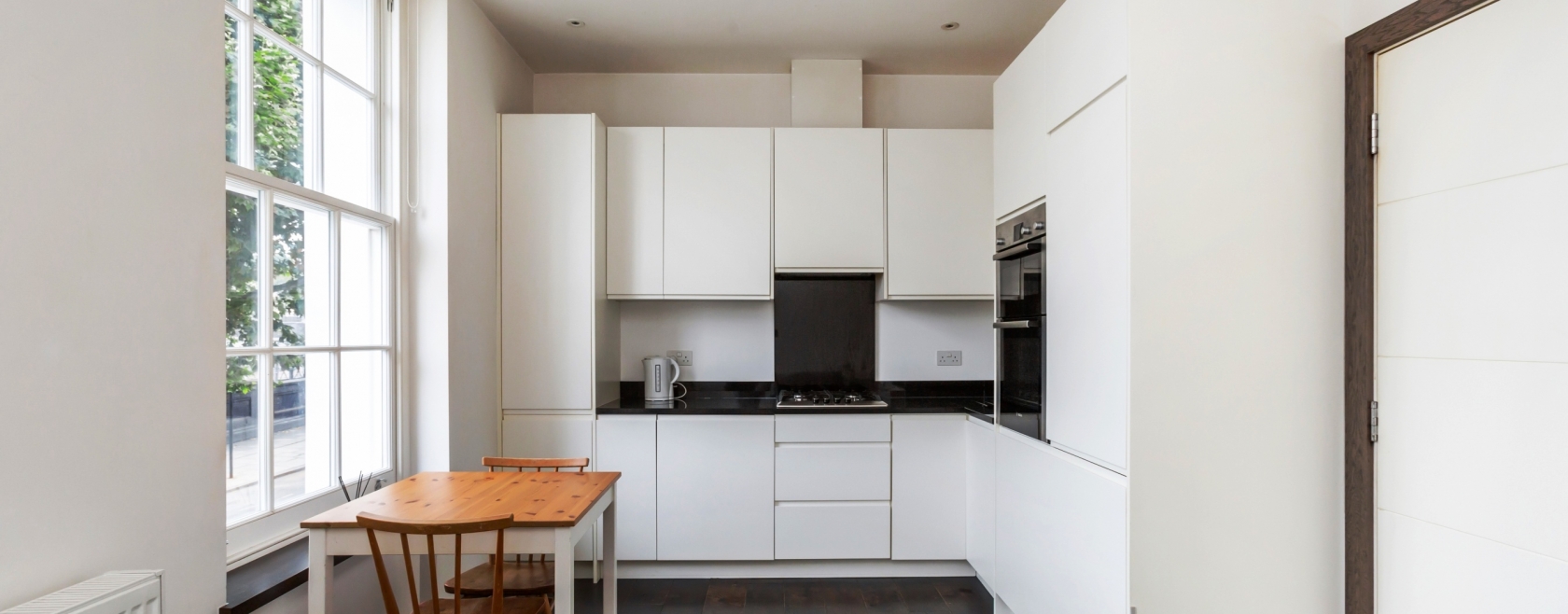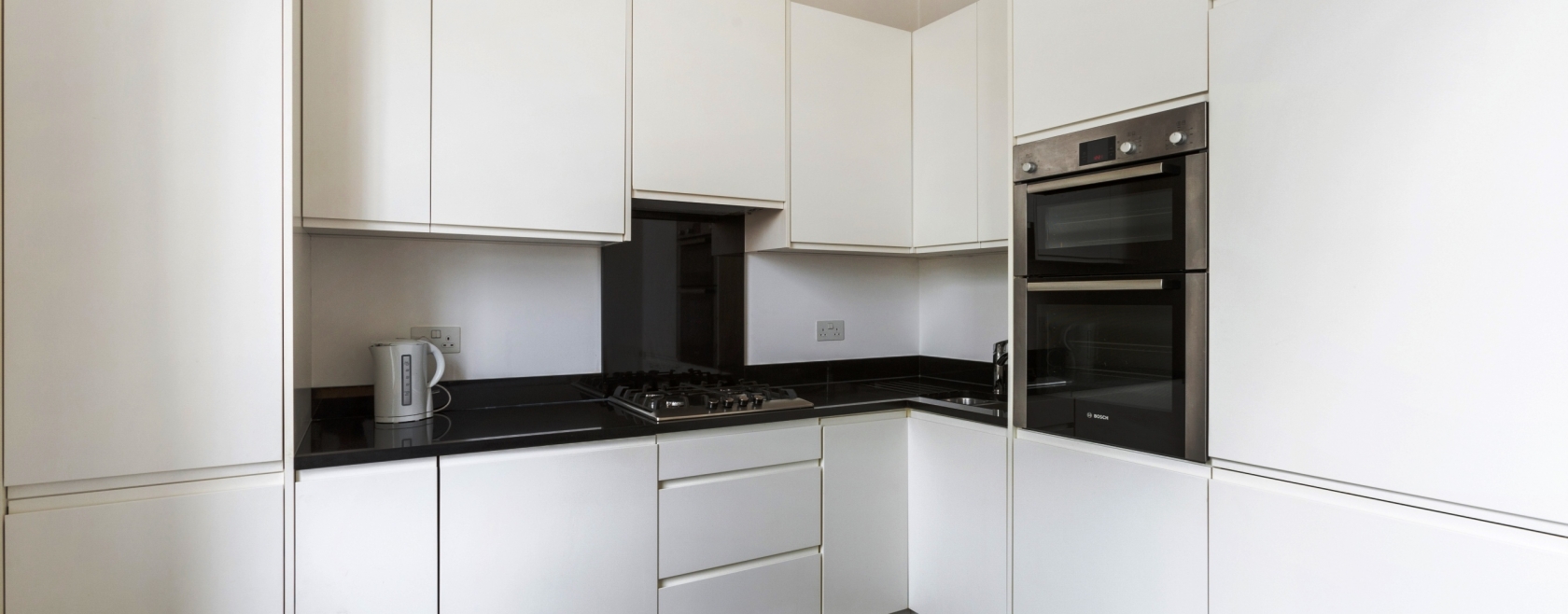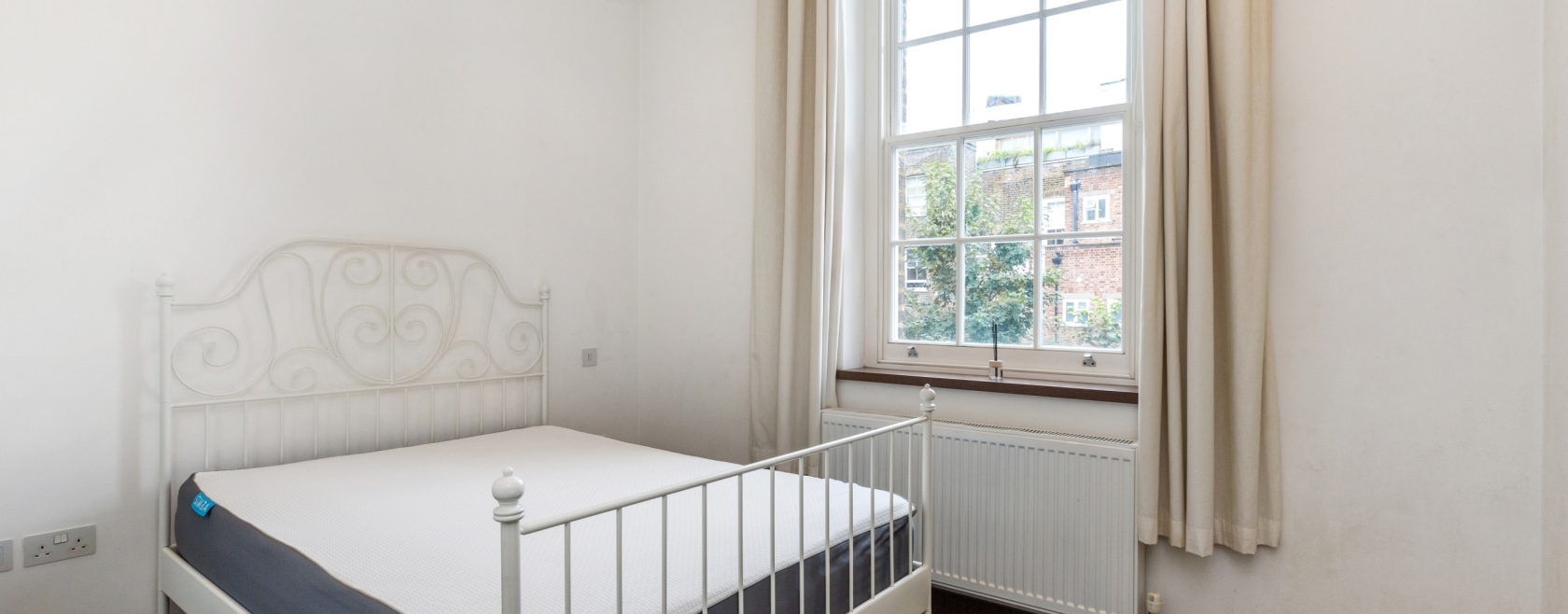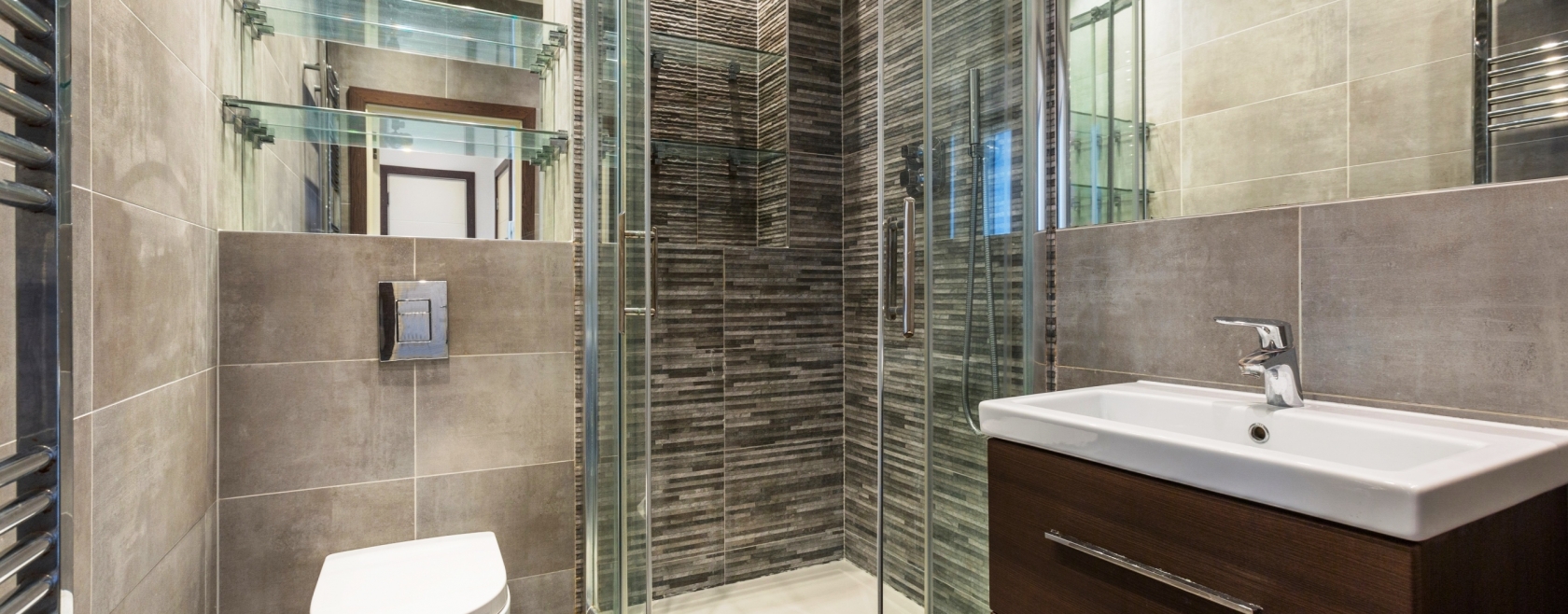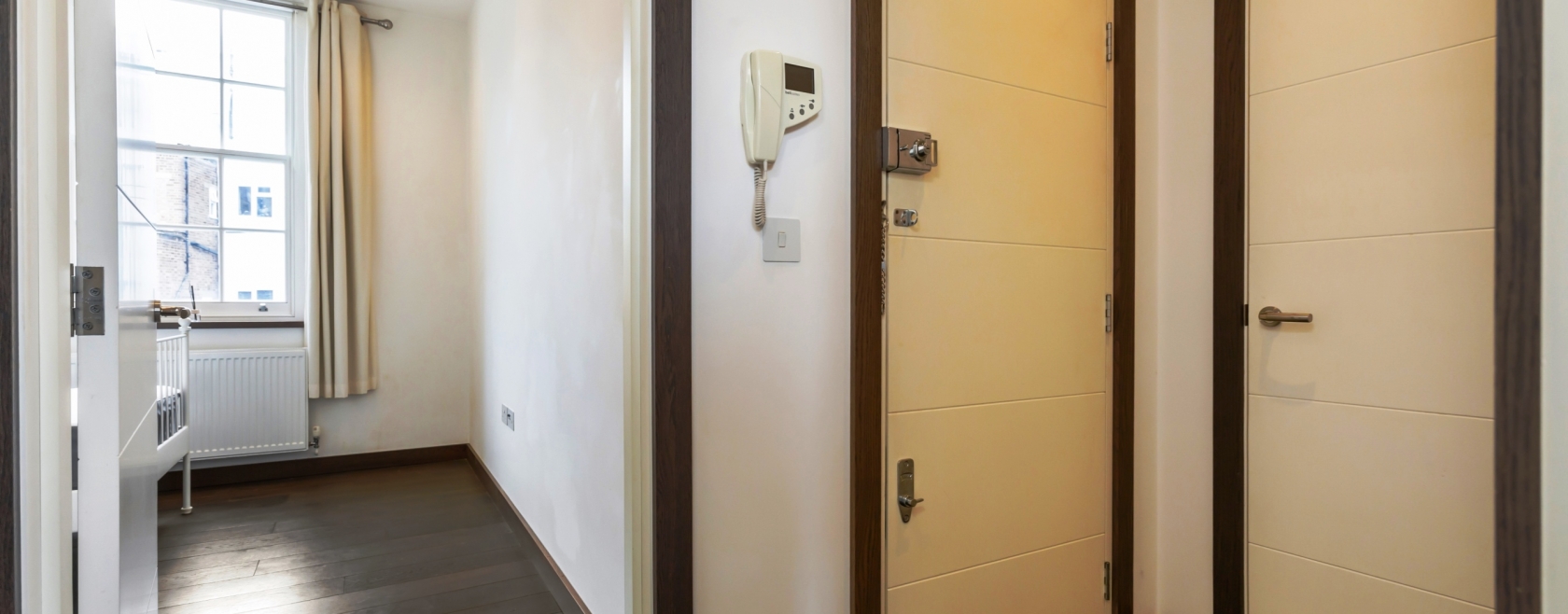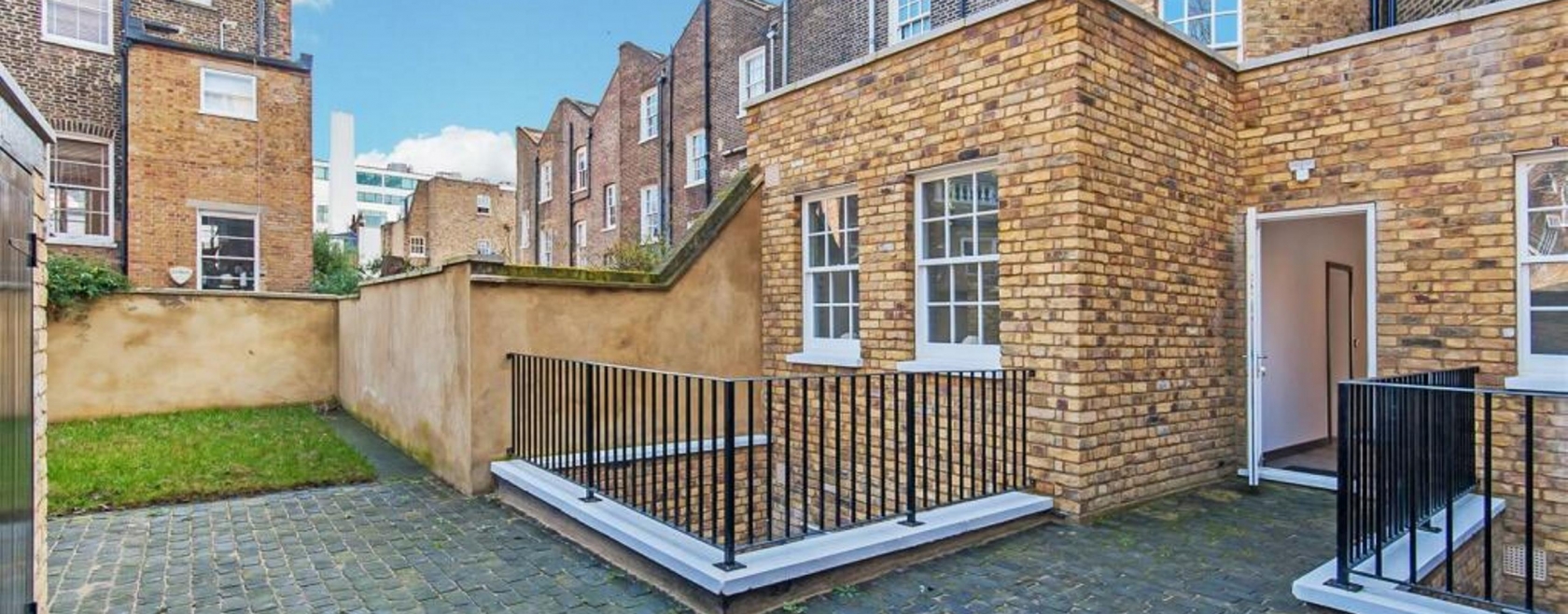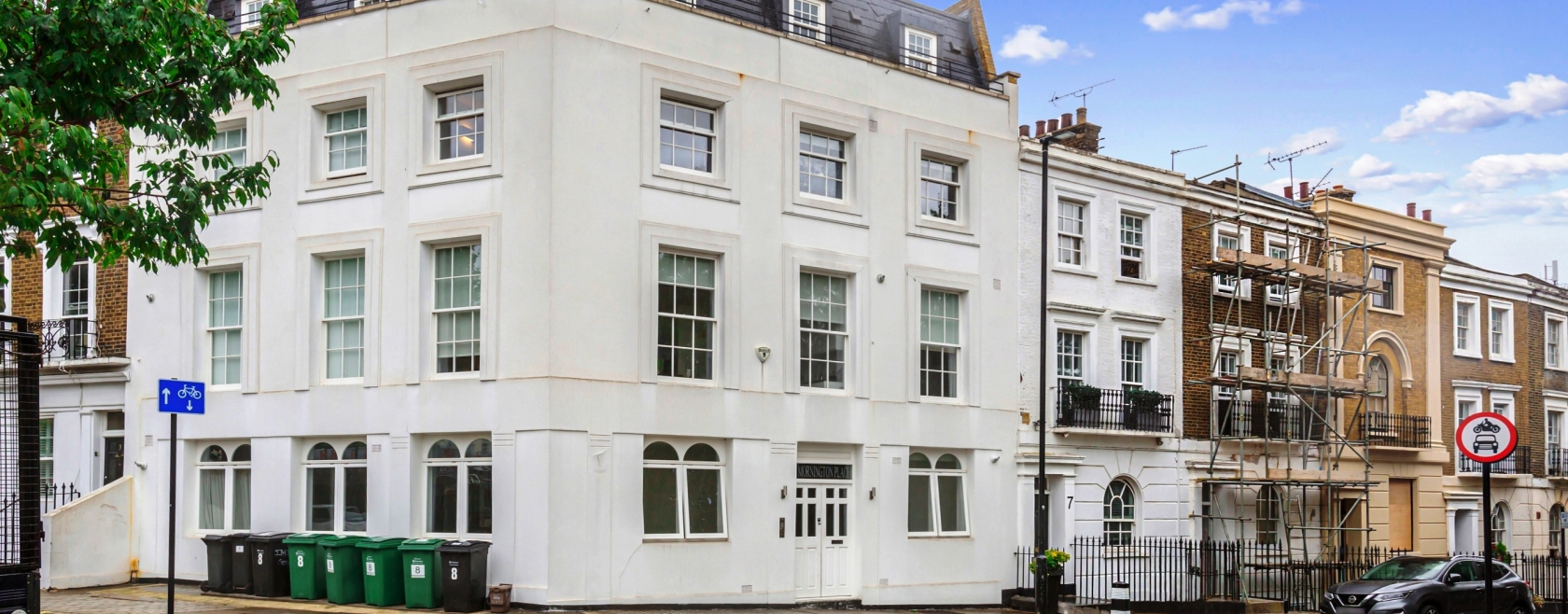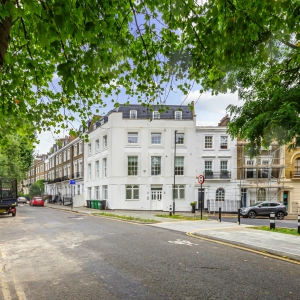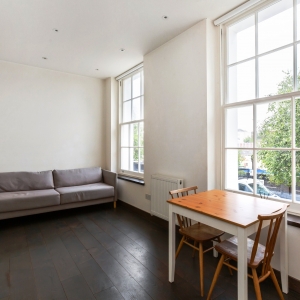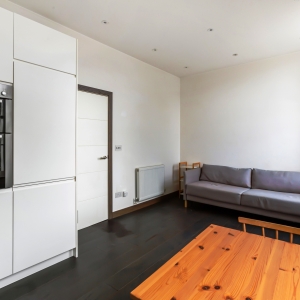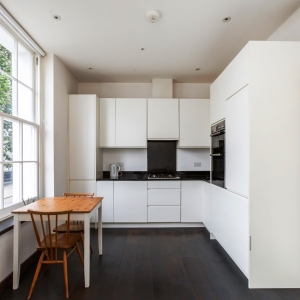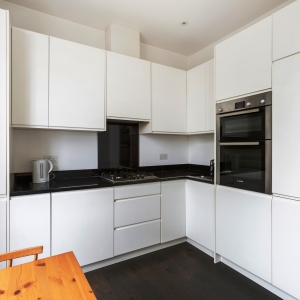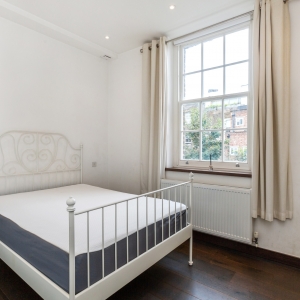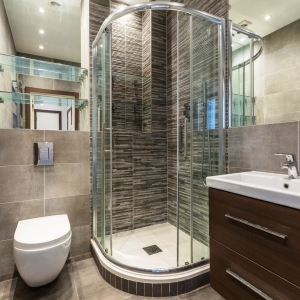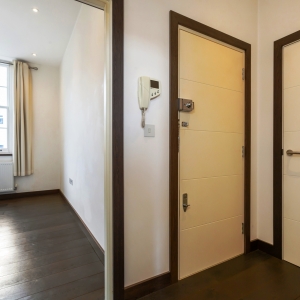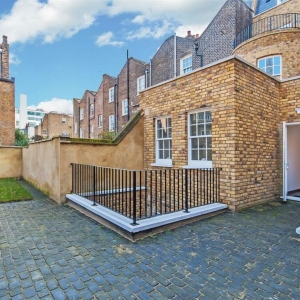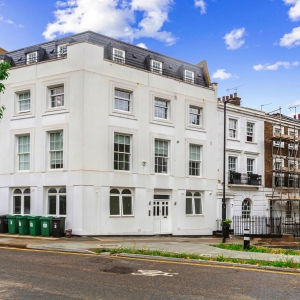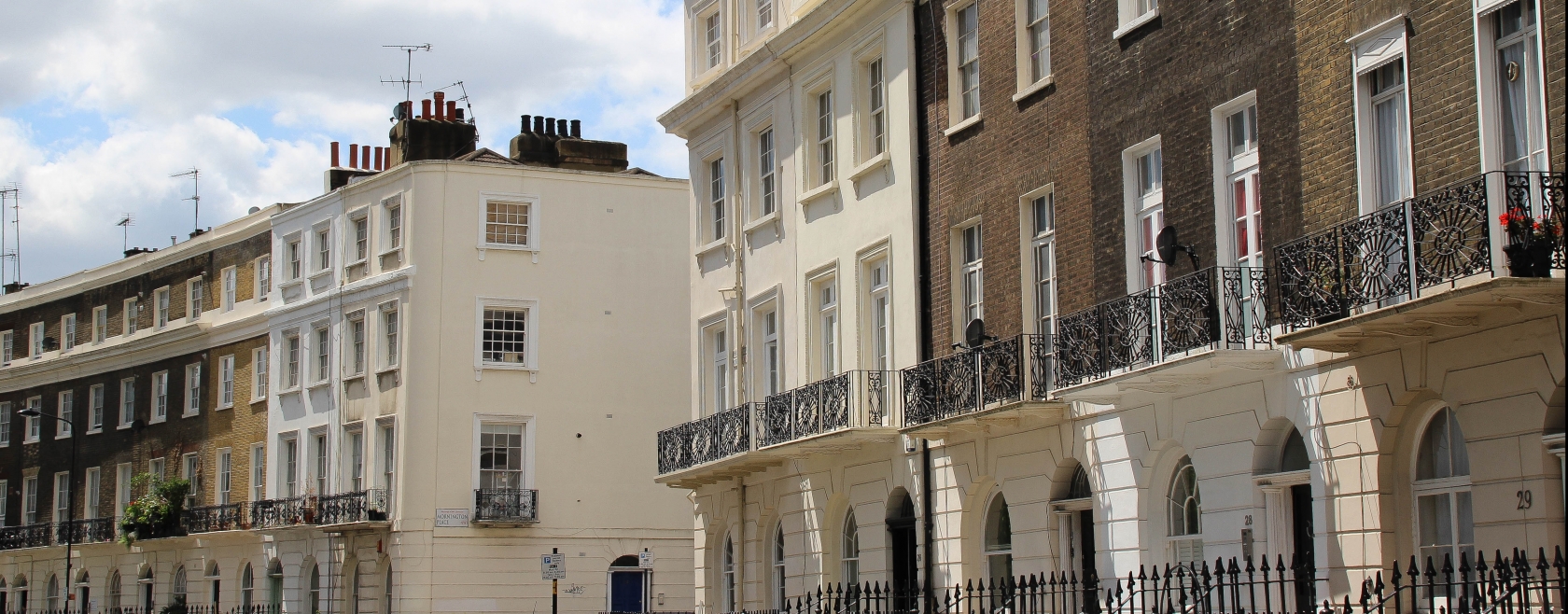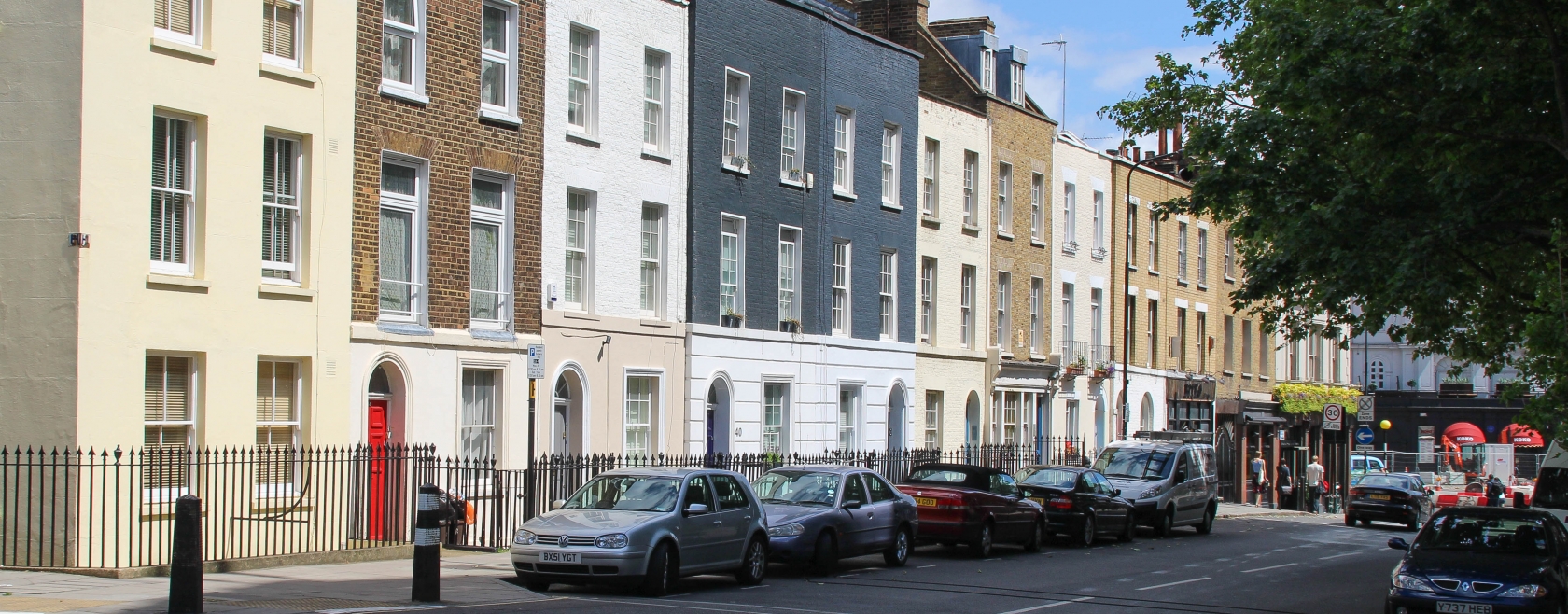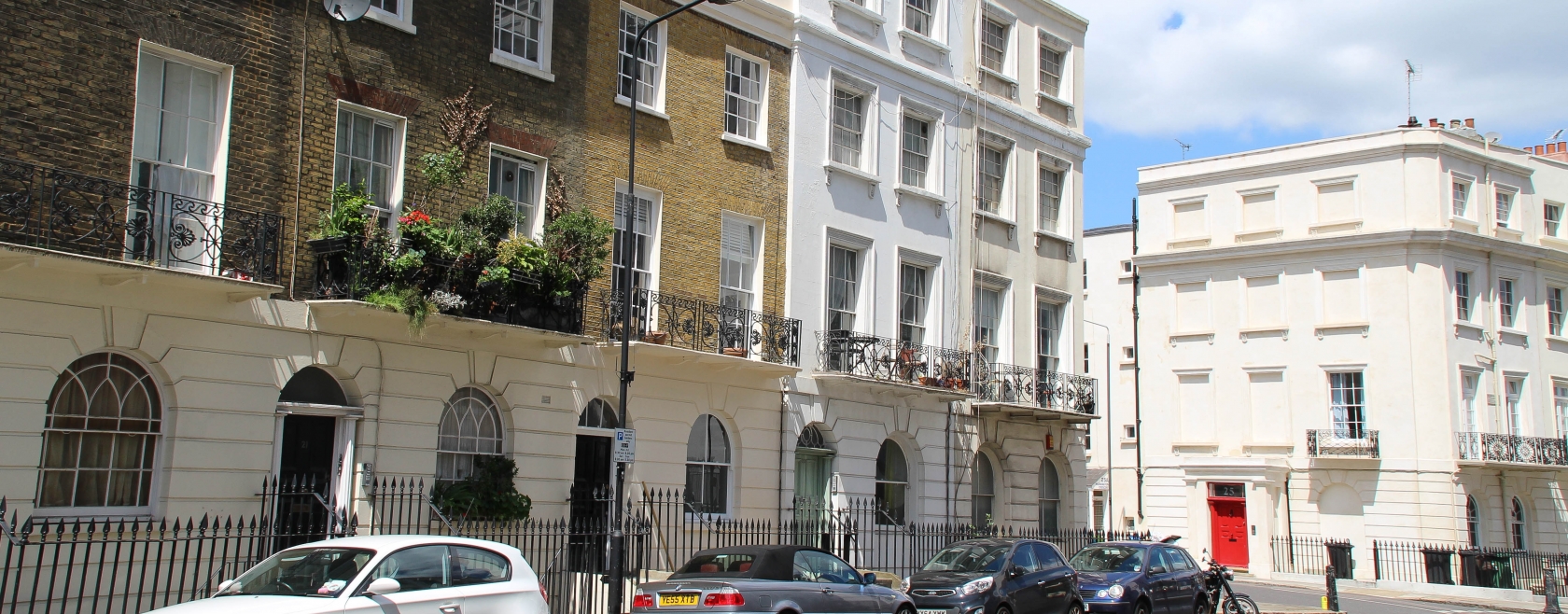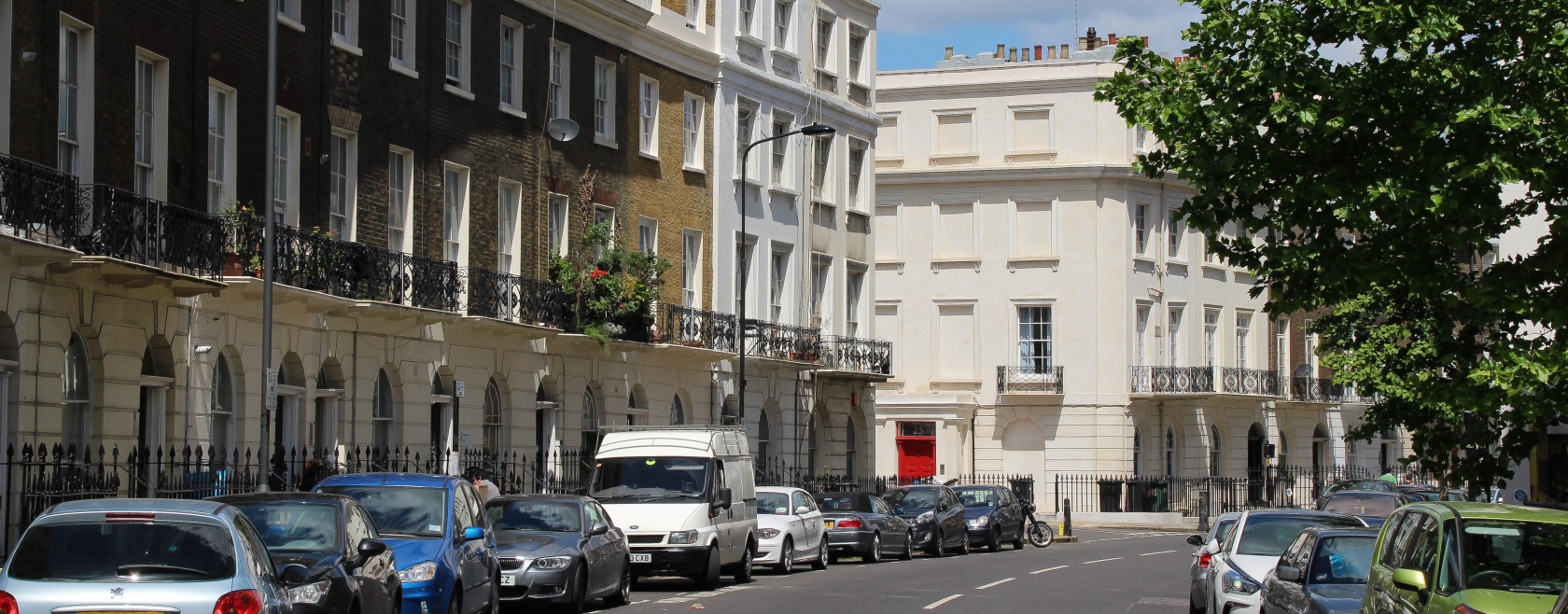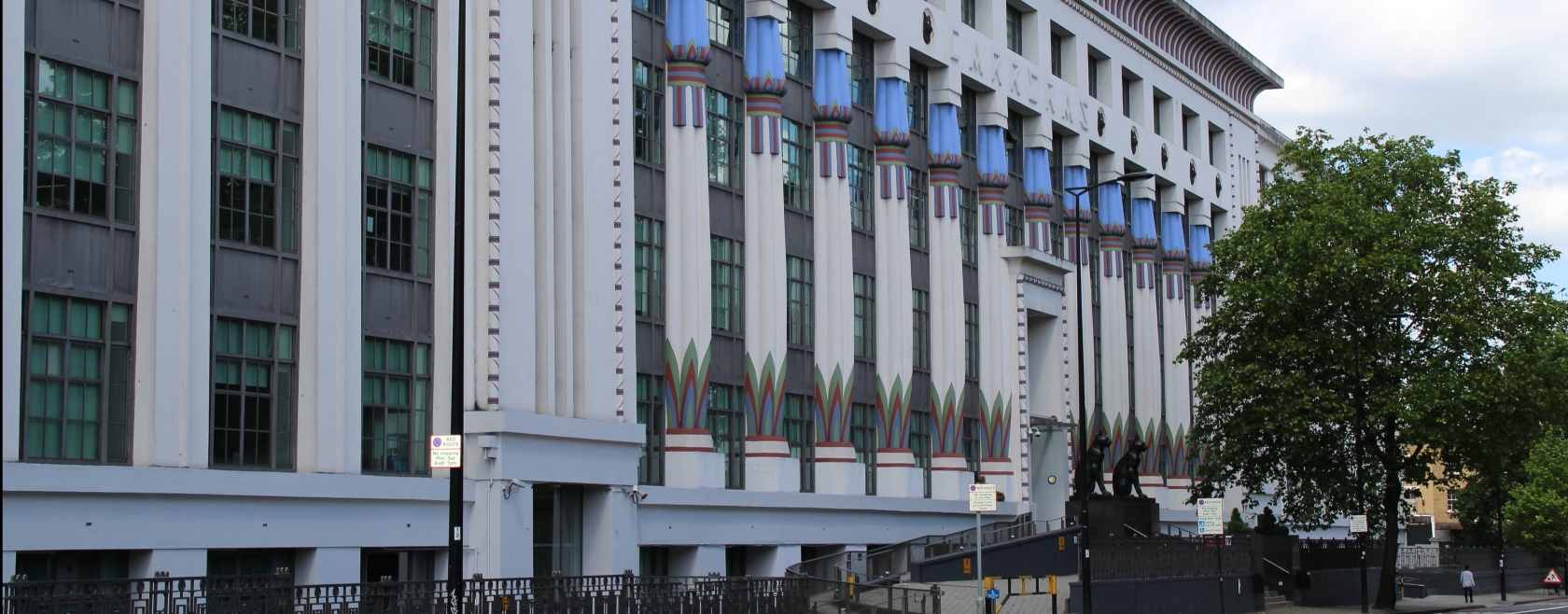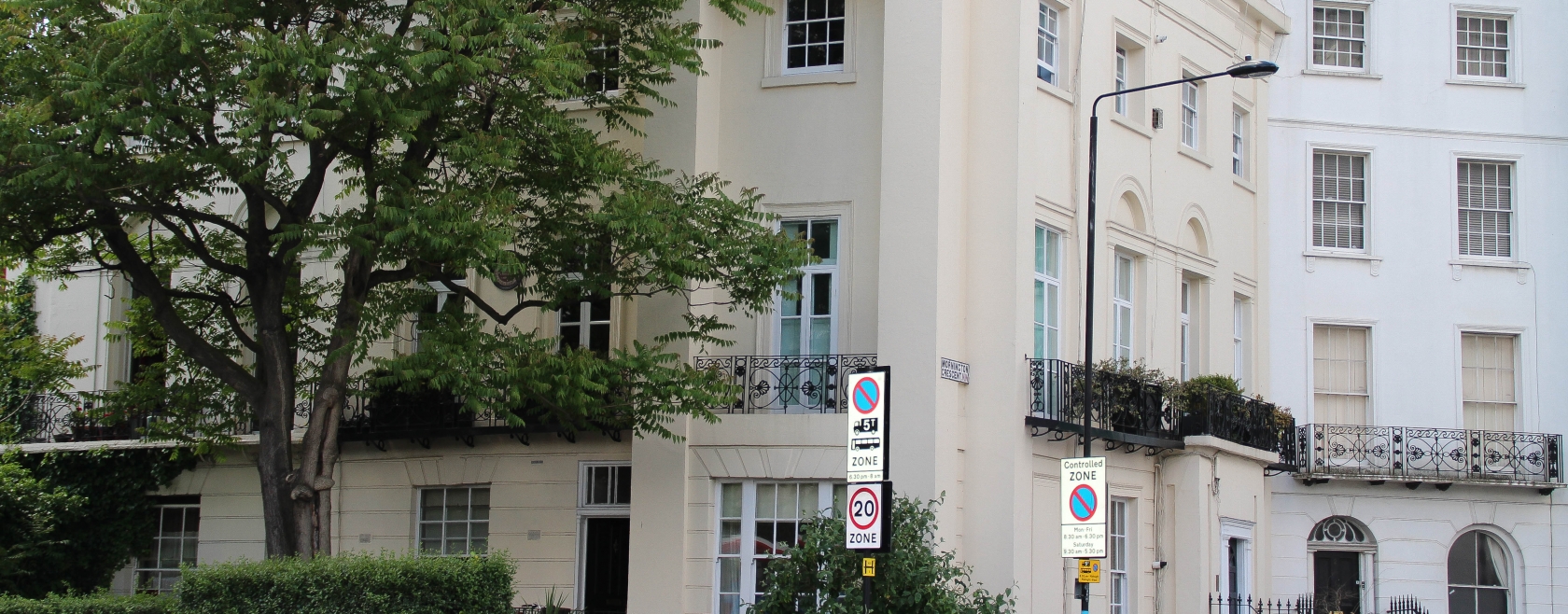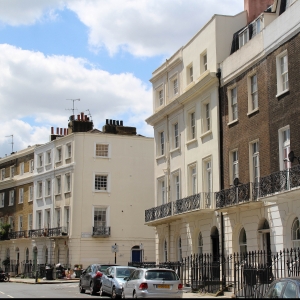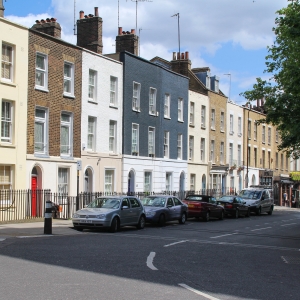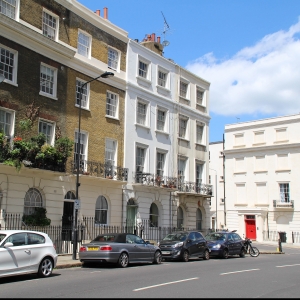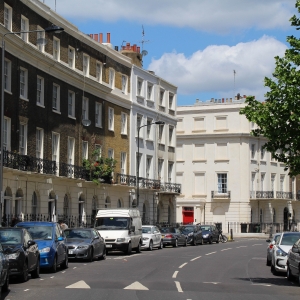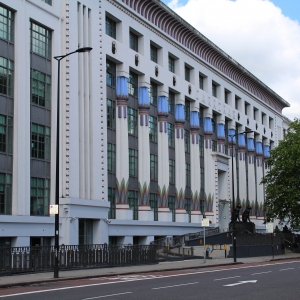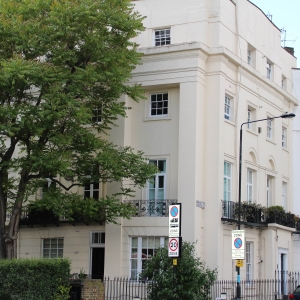Mornington Place, Camden Town
£490,000
A bright and spacious period flat on first floor of an end-of-terrace Victorian period conversion. The building was previously the Victoria Public House which was converted to stylish flats in 2015. Bright south west facing living room with large sash windows. Open plan to a fully fitted kitchen with ample dining space. The flat is ideally located close to Camden Town and Mornington Crescent's multiple transport links, shops, restaurants and entertainment facilities with the open spaces Regent's Park a short walk away.
Chain Free. Long lease. Large communal garden.
Living Room 18' x 10'3" Two large sash windows
Kitchen Fully fitted. Ample dining space. Included in above measurements
Bedroom 12'6" x 10'11 Sash window.
Bathroom 6'7" x 5'5" High quality, fully tiled.
Large communal garden to rear
Tenure: Leasehold 142 years
Ground rent: £250 p.a.
Service Charge: £1128 p.a. includes buildings insurance
Council Tax: Band E (Camden Borough)
EPC Band C
Chain Free. Long lease. Large communal garden.
Living Room 18' x 10'3" Two large sash windows
Kitchen Fully fitted. Ample dining space. Included in above measurements
Bedroom 12'6" x 10'11 Sash window.
Bathroom 6'7" x 5'5" High quality, fully tiled.
Large communal garden to rear
Tenure: Leasehold 142 years
Ground rent: £250 p.a.
Service Charge: £1128 p.a. includes buildings insurance
Council Tax: Band E (Camden Borough)
EPC Band C
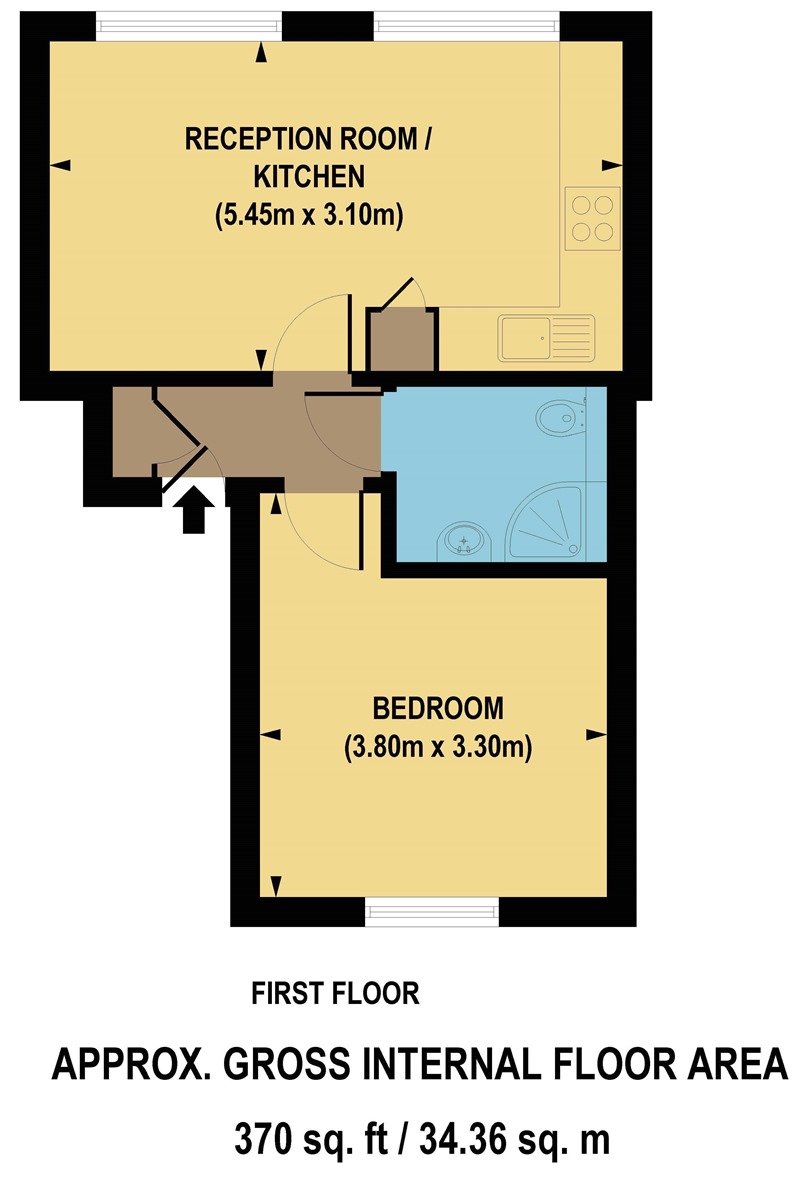
PROPERTY LOCATION
STREET INFO
This street name commemorates the eldest brother of the Duke of Wellington, Richard Wellesley, the Earl of Mornington. Many other landmarks bear his name too, including: Wellesley Island at Alexandra Bay; Province Wellesley, Malaysia and Mornington Peninsula, South of Melbourne.
The houses on the street were built in a crescent shape to overlook a semi-circular garden which was eventually built over 100 years later. Many of the five storey terraces have now been converted into luxurious flats but a few have escaped redecoration and are awaiting a new wardrobe! The mix of properties and the crescent's quirkiness make it special and very popular.
The large white Art Deco building in the middle of the crescent, Greater London House, was erected between 1926-28 to house the Carreras cigarette factory – an example of Egyptian Revival Architecture. Two gigantic effigies of black cats stood outside (and their image used on Craven A cigarette packets). With its conversion into offices in the 1960s, all the Egyptian details were lost. Thankfully, in the 1990s, the pseudo-Egyptian facade was lovingly restored and the replica cats reinstated. At 550 feet (168 metres) long the building (Silk) Cuts quite a dash. (Ironic that the British heart Foundation now has its offices there).
The Art Deco theme continues at the junction of Arlington Road where Mornington Court is situated. Many of the flats in this stylish and unusual local authority building have been bought and sold in recent years. The demand is such that they never stay on the market for long. Further along the crescent, Mornington Terrace and Mornington Place provide a good cut through on foot to Regents Park.
Mornington Crescent curves between Camden High Street in the north-east and the Hampstead Road in the south and is graced by a few plane trees. The Regency houses which face the back of Greater London House are mostly four and five storey, some with mansards built into their roofs. The main doors are reached by two steps over rather deep light wells. The houses between Arlington Road and Mornington Place are larger and grander. They have stucco on basement and ground floors, well-proportioned front steps and rather graceful arched lights over their doors and the ground floor windows.
Mornington Crescent is typically Camden and unlike anywhere else in London. Its past is as varied as its residents. Older residents will remember the tarnished hoarding fixed to the side of number 25, with the legend “Hotel Splendide”. There never was a hotel on the site, it was simply a film prop. Two films are credited as the reason for it being there. The Gentle Gunman (1952), but it’s much more likely to have been used for the 1932 film “Hotel Splendide”. Some film buffs accused the film of falling into the category of 'Quota Quickie' (low cost, poor quality, quickly accomplished films made to stimulate the declining British film industry of the 1920s) but Daniel Craig was involved in a remake so it can't have been so bad! Although now removed,
you can still see what the plaque looked like by searching for the 1994 painting Hotel Splendide (Mornington Crescent) by Artist Arturo di Stefano, held in the Government Art Collection.
Mornington Crescent was and still is a favourite residence of writers and artists. There is a blue plaque commemorating the painter and etcher Walter Sickert. He had studios at number six. Sickert had a fascination for urban culture and challenged the conventions of painting. His approach to painting – documentary realism – resulted in his series of paintings, The Camden Town Murder (1906 – 1909). Spencer Fredrick Gore lived at No.31 and George Cruikshank (an illustrator for Dickens) just around the corner on Hampstead Road. Luckily Cruikshank didn't live to see the Carreras cigarette factory as he became a staunch anti-smoking campaigner!
Last but not least, Mornington Crescent is served by its own tube station which sits at the foot of Camden High Street; convenient for local shops as well as local transport.
The houses on the street were built in a crescent shape to overlook a semi-circular garden which was eventually built over 100 years later. Many of the five storey terraces have now been converted into luxurious flats but a few have escaped redecoration and are awaiting a new wardrobe! The mix of properties and the crescent's quirkiness make it special and very popular.
The large white Art Deco building in the middle of the crescent, Greater London House, was erected between 1926-28 to house the Carreras cigarette factory – an example of Egyptian Revival Architecture. Two gigantic effigies of black cats stood outside (and their image used on Craven A cigarette packets). With its conversion into offices in the 1960s, all the Egyptian details were lost. Thankfully, in the 1990s, the pseudo-Egyptian facade was lovingly restored and the replica cats reinstated. At 550 feet (168 metres) long the building (Silk) Cuts quite a dash. (Ironic that the British heart Foundation now has its offices there).
The Art Deco theme continues at the junction of Arlington Road where Mornington Court is situated. Many of the flats in this stylish and unusual local authority building have been bought and sold in recent years. The demand is such that they never stay on the market for long. Further along the crescent, Mornington Terrace and Mornington Place provide a good cut through on foot to Regents Park.
Mornington Crescent curves between Camden High Street in the north-east and the Hampstead Road in the south and is graced by a few plane trees. The Regency houses which face the back of Greater London House are mostly four and five storey, some with mansards built into their roofs. The main doors are reached by two steps over rather deep light wells. The houses between Arlington Road and Mornington Place are larger and grander. They have stucco on basement and ground floors, well-proportioned front steps and rather graceful arched lights over their doors and the ground floor windows.
Mornington Crescent is typically Camden and unlike anywhere else in London. Its past is as varied as its residents. Older residents will remember the tarnished hoarding fixed to the side of number 25, with the legend “Hotel Splendide”. There never was a hotel on the site, it was simply a film prop. Two films are credited as the reason for it being there. The Gentle Gunman (1952), but it’s much more likely to have been used for the 1932 film “Hotel Splendide”. Some film buffs accused the film of falling into the category of 'Quota Quickie' (low cost, poor quality, quickly accomplished films made to stimulate the declining British film industry of the 1920s) but Daniel Craig was involved in a remake so it can't have been so bad! Although now removed,
you can still see what the plaque looked like by searching for the 1994 painting Hotel Splendide (Mornington Crescent) by Artist Arturo di Stefano, held in the Government Art Collection.
Mornington Crescent was and still is a favourite residence of writers and artists. There is a blue plaque commemorating the painter and etcher Walter Sickert. He had studios at number six. Sickert had a fascination for urban culture and challenged the conventions of painting. His approach to painting – documentary realism – resulted in his series of paintings, The Camden Town Murder (1906 – 1909). Spencer Fredrick Gore lived at No.31 and George Cruikshank (an illustrator for Dickens) just around the corner on Hampstead Road. Luckily Cruikshank didn't live to see the Carreras cigarette factory as he became a staunch anti-smoking campaigner!
Last but not least, Mornington Crescent is served by its own tube station which sits at the foot of Camden High Street; convenient for local shops as well as local transport.
PUBLIC TRANSPORT
Mornington Crescent tube station (Northern Line)
It takes 3 minutes 13 seconds to walk the length of Mornington Crescent. The northern end is opposite Mornington Crescent tube station (Northern Line).
Bus routes close by
24, 29, 134, N29 and N279
